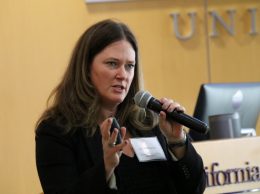Sengupta: Businesses should be getting back to basics

Sumantra Sengupta
By Sumantra Sengupta
To say that we live in a somewhat turbulent economy is probably an understatement. The stock markets are volatile, the price of oil is a global roller coaster, fluctuation of the U.S. dollar is more evident, world politics and economics are closer aligned than they should be, and all that is coupled with our normal day-to-day business environment volatility.
In my travels and discussions with executives in many environments, including higher education, I have found that the tendency to play the “let’s blame the macro factors” game is quite common and is being used to hide internal inefficiencies and misguided business strategies. While some elements of performance are truly outside our control, it is probably a good time to take a few steps back and do some business soul-searching to further improve our own positions.
Here are five actions that worked in my past lives during turbulent times:
• Determine the turbulence tolerance: In uncertain times, there is a natural tendency to panic even at the slightest deviations from the norm. This causes unnecessary friction and a lot of additional work for people who are already stretched thin. It is important for a company to understand their baseline goals, their stretch goals and the “it will never happen, but we will wish” goal. Measuring against the most optimistic forecast may be a meaningful exercise for administrators but does nothing to improve the business or serve as motivation for those trying — so don’t do it!
• Focus on getting back to basics: When the economy is on an upward trajectory, it is easy to perform like a superstar. Great sales numbers hide a lot of evils, including unnecessary channel concentration and increased internal costs. In many cases, business plans that are nebulous get approved and remain unmonitored. Business adjacencies that distract from the core are pursued. I suggest using time wisely to explore returning to the basics of what originally made the company great.
• Apply the rule of 10 percent: I suggest that executives take a close look at the revenue-and-cost portfolio every year. Generally, I maintain that institutions should have plans to generate 10 percent incremental revenue from new offers or products so that the portfolio does not become stale. The same rule applies to looking at unnecessary costs that support products and offers that are archaic. This requires a mindset and organizational constructs that encourage and reward innovation and growth. Incorporating a process that systematically sheds archaic products and services is just as innovative in certain environments as the process of introducing new offers.
• Get closer to existing revenue streams: Turbulent times test all relationships and contractual agreements. It is also the time when existing customers and channel partners must be made to feel particularly special. Go the extra mile to ensure that your customers understand the importance of continuing the process despite tough times. In some cases, one may need to make some modifications to production, delivery and deployment schedules. I have been through three large economic swings in my professional career and in every case managed to ensure that customers were not unnecessarily disadvantaged. In all cases, most of my clients remained loyal and stayed the course.
• Execute against the 80/20: Every company or industry I have served exhibits the 80/20 rule: 80 percent of the revenue or profits are generated by 20 percent of the products. Tumultuous times should be used to renew the focus on the core of the business and delay or cancel the nice-to-haves. While some would critique this as being shortsighted, it is oftentimes necessary to protect the core. When times stabilize or reverse, you can always regain the elements of context that were shifted.
• Sumantra Sengupta is the assistant dean of the School of Management at California Lutheran University.












